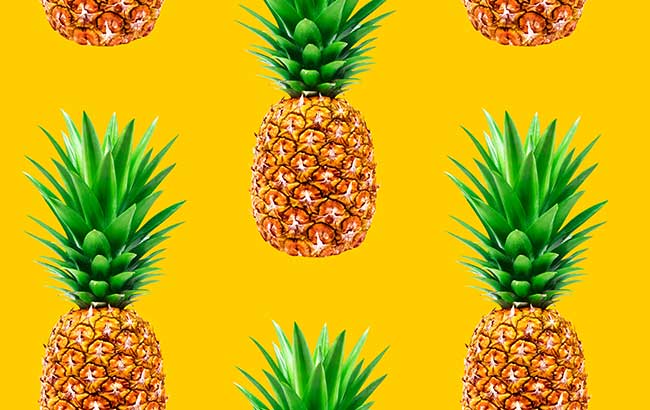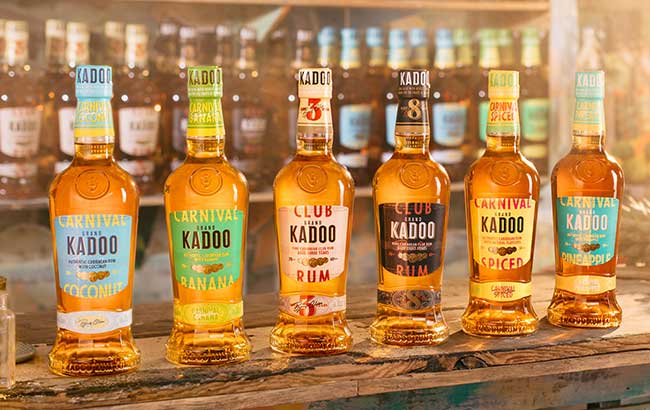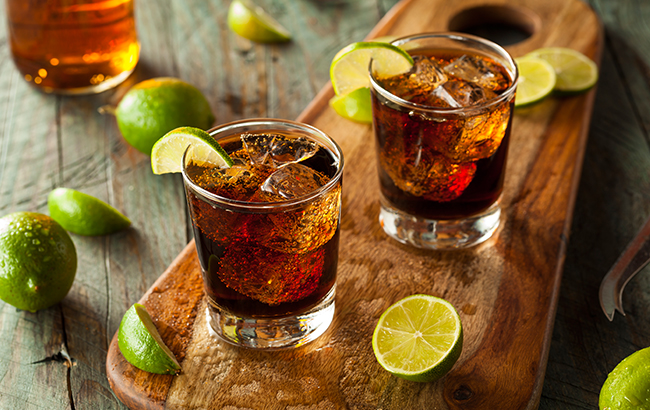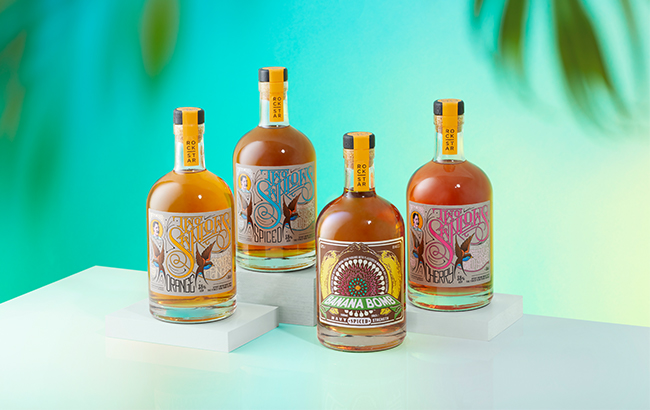Flavoured rum: surfing the wave
By Tom Bruce-GardyneFlavoured rum has become increasingly popular and producers hope to convert new fans to the joys of premium expressions.

“Historically, in the Caribbean, people have always flavoured rum with everything from local spices to pineapple and other tropical fruits,” says global rum ambassador Ian Burrell.
“It was either for medicinal purposes or to make the actual spirit more palatable, but flavoured rums have been around for as long as rum’s been around.”
It was no different with Scotch whisky, which was traditionally sweetened with heather, honey, kelp – anything to soften the blow. But while flavoured Scotch remains somewhat taboo, at least in a bottle, rum is currently surfing a great wave of spicy, tropical flavours.
Richard Ryan, co-founder and head of liquid innovation at Drinksology, offers some historical context to how flavoured rum spread from the Caribbean.
“By the time rum reached the colonial shores of America, it was often enjoyed as a Toddy – mixed with sugar and often spices of some kind. Jump forward 100-plus years to the end of Prohibition, and rum was re-popularised by the tiki movement created by Don the Beachcomber,” he says, referring to the world’s first tiki bar, which opened in 1934.
Starting the stampede
Then came Captain Morgan Original Spiced, launched in the US in 1984, followed by Sailor Jerry in the late 1990s, and a stampede of others.
Burrell believes one of the reasons this subcategory boomed is that you don’t have to hang around waiting for the spirit to age.
“You just put some caramel inside a young spirit, add some vanilla, some tropical flavours and call it a spiced rum,” he says. “Or a ‘spirit drink’ as it legally has to be called now.”
That is in the EU, where officially rum cannot be flavoured – a rule that everyone quietly ignores, it seems.
“Rum has a very woolly definition, and because there’s no policing, nobody really knows where the boundaries lie,” says Ryan, whose fruit-flavoured Grand Kadoo rums were inspired by classic cocktails such as the Piña Colada for Coconut, the Mai Tai for Pineapple, and the Rum Runner for Banana.
“Our Grand Kadoo is made from a blend of aged and unaged rums. But most, let’s call them ‘flavoured rum drinks’, have an incredibly low percentage of rum, full stop. So, they’re essentially neutral spirit.”

Burrell insists the rum category is well regulated, at least in the Caribbean in terms of production.
“Jamaica has regulations, Martinique has them, Cuba has them, so it’s just the same as Scotland, Ireland and America when it comes to whisk(e)y,” he says. The issue is more about labelling and transparency within this subcategory.
“Every single unadulterated brand or rum company I know doesn’t have a problem with spiced rum,” he says. “What they have a problem with is the way spiced rums are allowed to market themselves as rums.”
In late 2020, La Hechicera, the premium Colombian rum brand acquired last year by Pernod Ricard, launched its Serie Experimental No.2, infused with local organic bananas.
Priced at around £65 (US$81) in the UK (£20 more than the Reserva Familial mother brand) its popularity has meant it is now on its fifth production run, according to managing director and co-founder Miguel Riascos.
“Just as rum can make for fantastic cocktails, it can make for fantastic combinations of flavours inside the bottle itself,” he says. Riascos reckons the unregulated nature of flavoured rum is “both a blessing and a curse. The blessing is that the sky’s the limit. It’s a blank canvas and open for everyone to innovate. And when you have so many rich cultures producing rum in the Caribbean and around the world, it’s definitely a good thing. That said, it’s a curse in that rum is in desperate need of clarity, transparency and very clear rules.”
Drinksology’s Ryan agrees, up to a point, and says: “I personally would like a little more regulation and structure, though not to the same extent as Scotch.”
In Campari’s recently released and highly detailed UK Rum Report, a distinction is drawn between ‘spiced’ and ‘flavoured’ rum, with the former on 11% and the latter on 5% as a global share.
The UK is where ‘spiced’ has the highest share of total rum, at 43.2%, and where flavoured rum’s share is predicted to grow from 5.6% to 13.3% by 2025.
Yet you can easily argue these two subcategories are one and the same, since it is really a marketing decision whether you slap ‘spiced’ or ‘flavoured’ on the label.
“It is a blurred line between them,” admits Burrell.

In the report, Chris Dennis, Campari UK’s rum and whisky ambassador, likens spiced rum to the Batman supervillain Harvey ‘Two-Face’ Dent, and says it’s “dismissed as a flash in the pan ‘spirit drink’ by the afficionado, and beloved by new-to-the-category consumers”.
He adds: “Spiced rum certainly has a place on that shelf; a cheaper-to-make product that can be distilled and bottled anywhere, and which doesn’t rely on authenticity or provenance to sell its brand. As rum grows though, category knowledge will grow alongside it, and the desire for provenance will become more and more relevant.”
Tom Hurst, founder and CEO of Rockstar Spirits, also believes provenance will matter more to consumers.
He launched his Pineapple Grenade in 2018, based on overproof sipping rum from Guyana’s Diamond Distillers and sweetened with salted caramel.
Other expressions have followed, including Banana Bomb, Grapefruit Grenade, and a cheaper 38% ABV range called Two Swallows.
He says: “The core volumes are very much with spiced rums, but all the growth and excitement is around tropical flavours and fruits.”
Bacardí Limón claims to have been the first major launch in the sector in 1995, and is still the rum giant’s top-selling flavour, according to Bacardi’s global senior vice-president, Ned Duggan, who views “flavours as an opportunity to reach out to new consumers who haven’t yet tried rum”.
As for differences to spiced rums, he says: “Flavoured rums are generally consumed more during the day, with their brighter, more vibrant flavours.”
Bacardí’s current range of flavours is restricted to around eight expressions in its biggest market, the US.
“Trends come and go in flavours, so we’re trying to stay disciplined,” Duggan says. “When we introduce a flavour, we generally discontinue one that’s not performing as well as we’d like.”
He maintains they “need to be tropical, and reminiscent of our provenance in the Caribbean”, which doesn’t quite explain the presence of Bacardí Raspberry.
That said, the range has stuck firmly to fruit and spice, with none of those crazy flavours that once clung to vodka.
There is no Bacardí whipped cream or fluffy marshmallow, and no plans to release one.
“My hope is that the category will remain disciplined, and I do believe there have been lessons learned from the past two decades,” says Duggan.
But Burrell believes this burgeoning subcategory will soon begin to eat itself, as ever more flavours are tried and dropped.
“What you’ll start to see is premium flavoured and spiced rums that talk about provenance and the quality of the ingredients, and less sugar because sugar seems to be the devil,” he says.
For now, this space is a bit of jungle, with big players and premium craft brands competing with companies whose products carry some confected backstory, a pirate or tropical animal on the label and barely a whiff of rum inside.
Yearning ambition
This does not help rum’s yearning ambition to premiumise.
In the US, the category remains bottom-heavy, with 84% of volume in the ‘value’ and ‘premium’ segments, according to the Distilled Spirits Council of the US.
Burrell blames the infamous cover-over subsidies given to Puerto Rican and US Virgin Island rums like Captain Morgan and Bacardí.
As well as distorting the American market, he believes it forces other Caribbean producers to compete with Bourbon.
“They’re trying to get a share of that premium dark spirit market from a small base – but it’s moving in the right direction,” he says.
In Europe, the UK is now the biggest rum market, according to Burrell, and the amount people are prepared to pay for a bottle has risen from around £30 to £80 (US$38-US$100), he reckons.
“You are starting to see a lot of activity in premium-plus rums in the UK,” adds Riascos, who is even more excited about France.
“A few years ago, it was limited to rhum agricole. Now it’s the most diverse and dynamic ultra-premium rum market in the world.”
He describes rum as “a sleeping giant, with tremendous upside potential”.
Ryan remains sceptical, however.
“It’s like the bridesmaid that never got married,” he says. “So many times, we’ve said ‘this is it – rum is going to explode’, but it never quite does.”
Duggan predicts a slow evolution rather than an explosion, but he fervently believes it will follow Tequila’s upward path.
“Tequila’s light and dark like rum, so there are a lot of things we can learn from our fellow Latin spirit,” he says. “And it should build belief within the industry that this transformation can take place.”

Related news
Future gazing: spirits trend predictions for 2026
